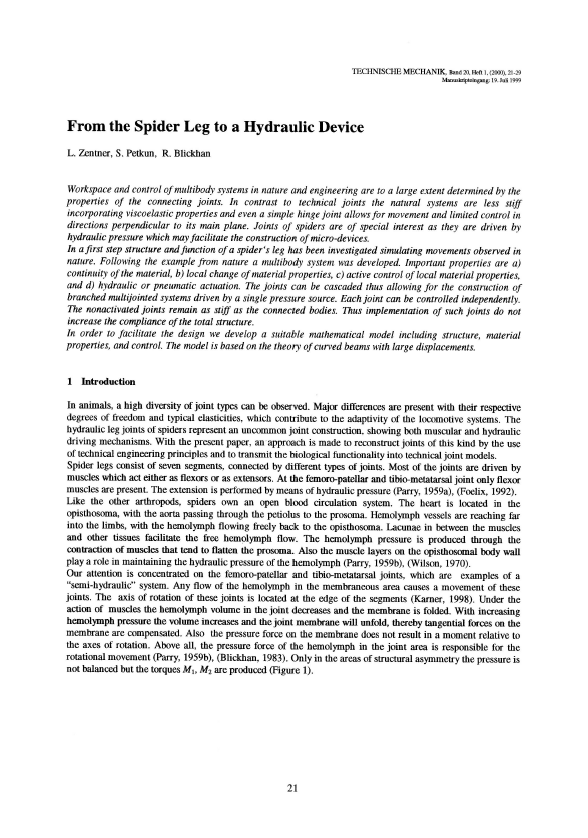From the Spider Leg to a Hydraulic Device
Abstract
Workspace and control of multibody systems in nature and engineering are to a large extent determined by the properties of the connecting joints. In contrast to technical joints the natural systems are less stiff incorporating viscoelastic properties and even a simple hinge joint allows for movement and limited control in directions perpendicular to its main plane. Joints of spiders are of special interest as they are driven by hydraulic pressure which mayfacilitate the construction of micro-devices. In a first step structure and function of a spider‘s leg has been investigated simulating movements observed in nature. Following the example from nature a multibody system was developed. Important properties are a) continuity of the material, b) local change of material properties, c) active control of local material properties, and d) hydraulic or pneumatic actuation. The joints can be cascaded thus allowing for the construction of branched multijointed systems driven by a single pressure source. Each joint can be controlled independently. The nonactivated joints remain as stiff as the connected bodies. Thus implementation of such joints do not increase the compliance of the total structure.
In order to facilitate the design we develop a suitable mathematical model including structure, material properties, and control. The model is based on the theory of curved beams with large displacements.





